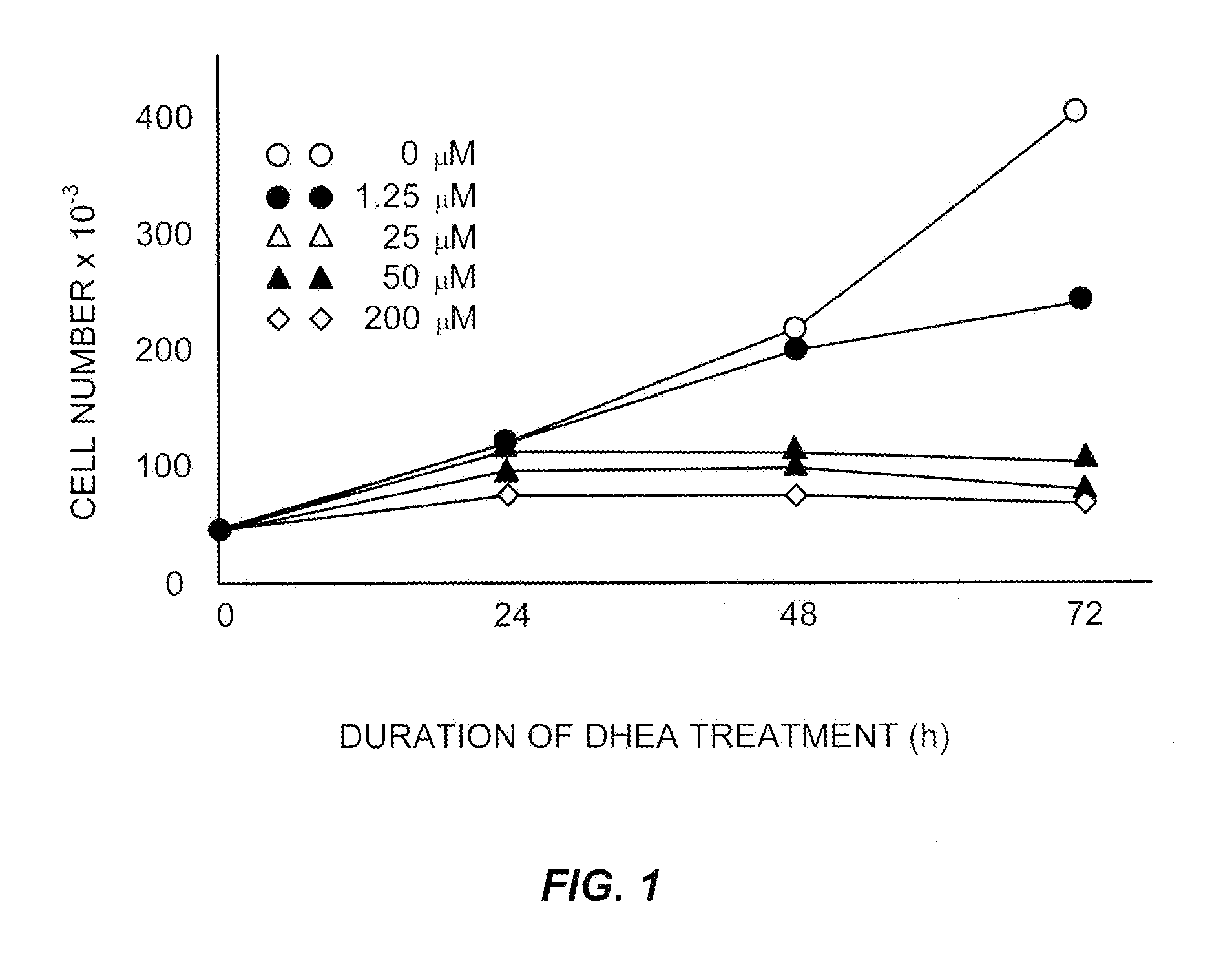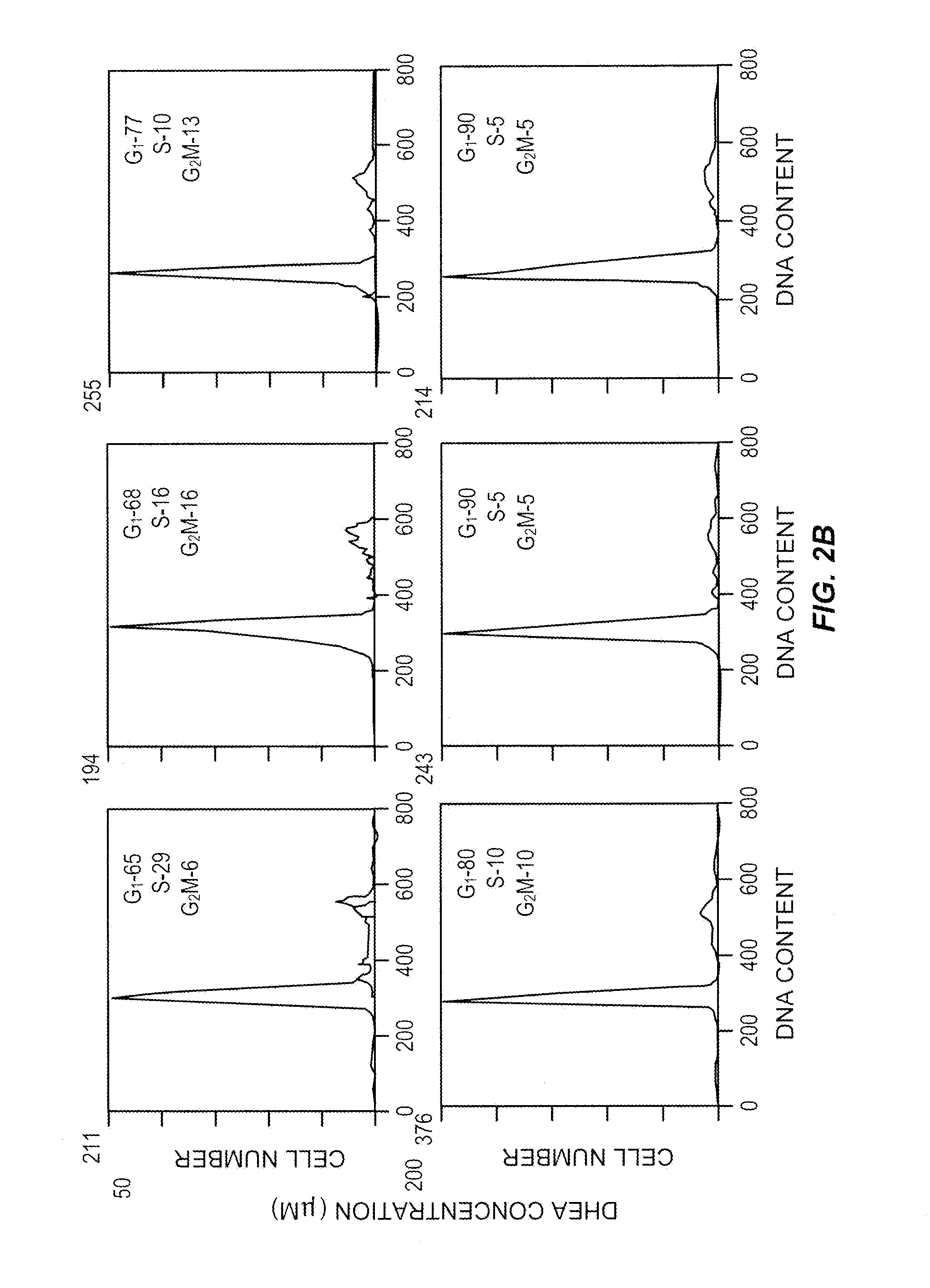Composition, formulations & kit for treatment of respiratory and lung disease with dehydroepiandrosterone(s) steroid & an Anti-muscarinic agent(s)
a technology of dehydroepiandrosterone and anti-muscarinic agent, which is applied in the field of compositions and formulations, can solve the problems of high health care costs, poor understanding of underlying causes, and early disability
- Summary
- Abstract
- Description
- Claims
- Application Information
AI Technical Summary
Benefits of technology
Problems solved by technology
Method used
Image
Examples
examples
[0052]In the following examples, DHEA means dehydroepiandrosterone, s means seconds, mg means milligrams, kg means kilograms, kw means kilowatts, Mhz means megahertz, and nmol means nanomoles.
examples 1 and 2
In Vivo Effects of Folinic Acid & DHEA on Adenosine Levels
[0053]Young adult male Fischer 344 rats (120 grams) were administered dehydroepiandrosterone (DHEA) (300 mg / kg) or methyltestosterone (40 mg / kg) in carboxymethylcellulose by gavage once daily for fourteen days. Folinic acid (50 mg / kg) was administered intraperitoneally once daily for fourteen days. On the fifteenth day, the animals were sacrificed by microwave pulse (1.33 kw, 2450 MHZ, 6.5 s) to the cranium, which instantly denatures all brain protein and prevents further metabolism of adenosine. Hearts were removed from animals and flash frozen in liquid nitrogen with 10 seconds of death. Liver and lungs were removed en bloc and flash frozen with 30 seconds of death. Brain tissue was subsequently dissected. Tissue adenosine was extracted, derivatized to 1, N6-ethenoadenosine and analyzed by high performance liquid chromatography (HPLC) using spectrofluorometric detection according to the method of Clark and Dar (J. of Neuros...
example 3
Preparation of the Experimental Model
[0055]Cell cultures, HT-29 SF cells, which represent a subline of HY-29 cells (ATCC, Rockville, Md.) and are adapted for growth in completely defined serum-free PC-1 medium (Ventrex, Portland, Me.), were obtained. Stock cultures were maintained in this medium at 37° (in a humidified atmosphere containing 5% CO2). At confluence cultures were replated after dissociation using trypsin / EDTA (Gibco, Grand Island, N.Y.) and re-fed every 24 hours. Under these conditions, the doubling time for HT-29 SF cells during logarithmic growth was 24 hours.
PUM
| Property | Measurement | Unit |
|---|---|---|
| particle size | aaaaa | aaaaa |
| particle size | aaaaa | aaaaa |
| concentrations | aaaaa | aaaaa |
Abstract
Description
Claims
Application Information
 Login to View More
Login to View More - R&D
- Intellectual Property
- Life Sciences
- Materials
- Tech Scout
- Unparalleled Data Quality
- Higher Quality Content
- 60% Fewer Hallucinations
Browse by: Latest US Patents, China's latest patents, Technical Efficacy Thesaurus, Application Domain, Technology Topic, Popular Technical Reports.
© 2025 PatSnap. All rights reserved.Legal|Privacy policy|Modern Slavery Act Transparency Statement|Sitemap|About US| Contact US: help@patsnap.com



